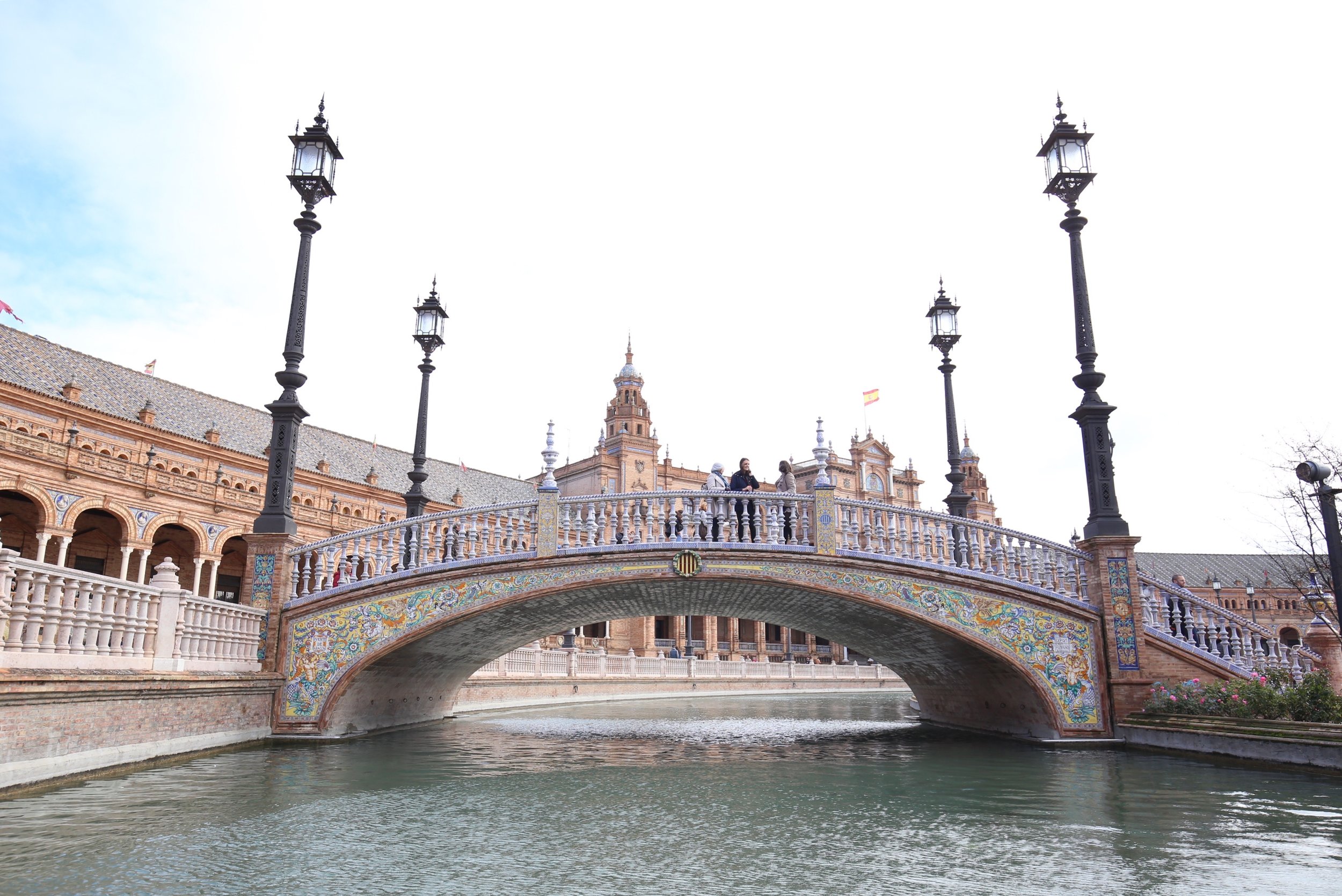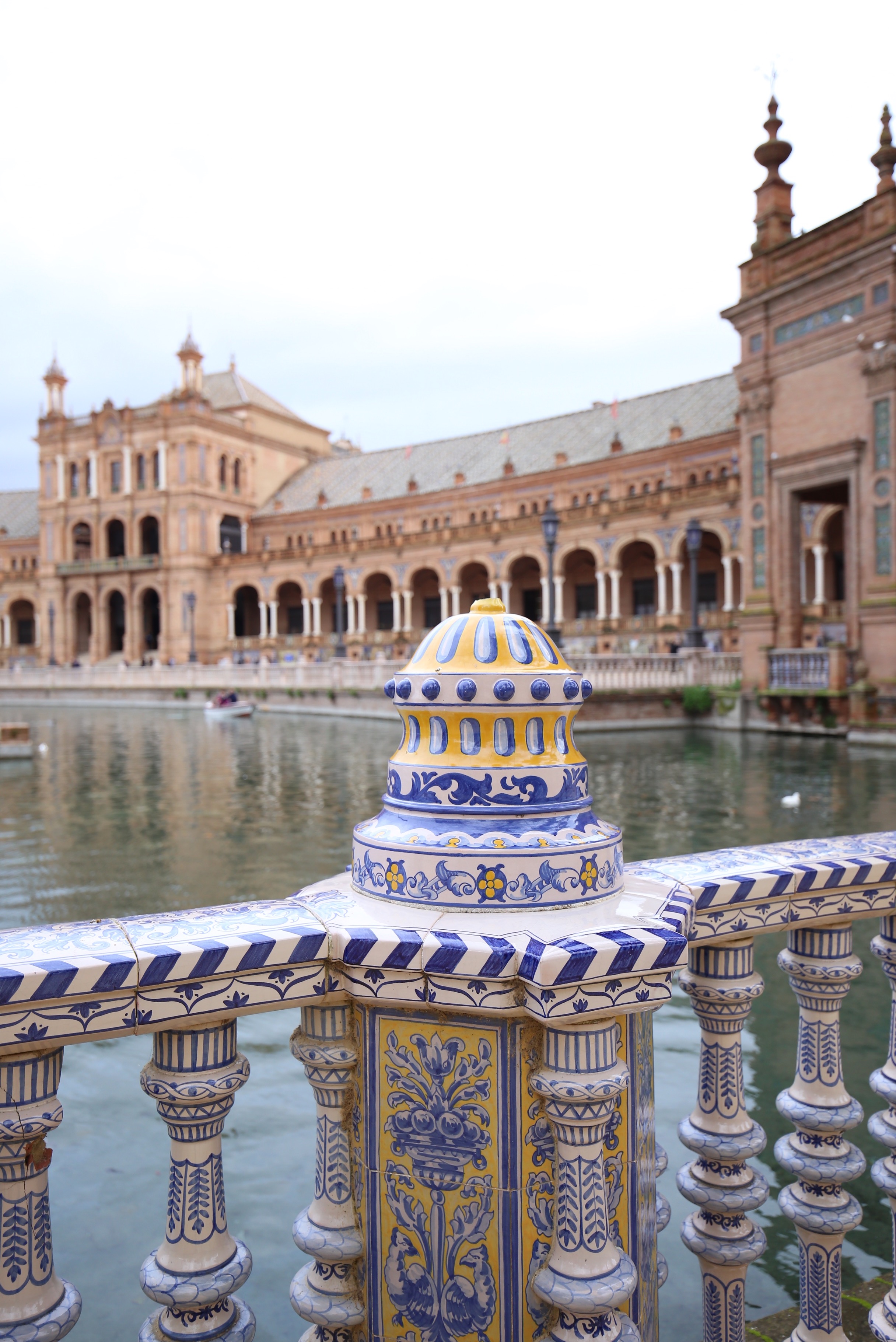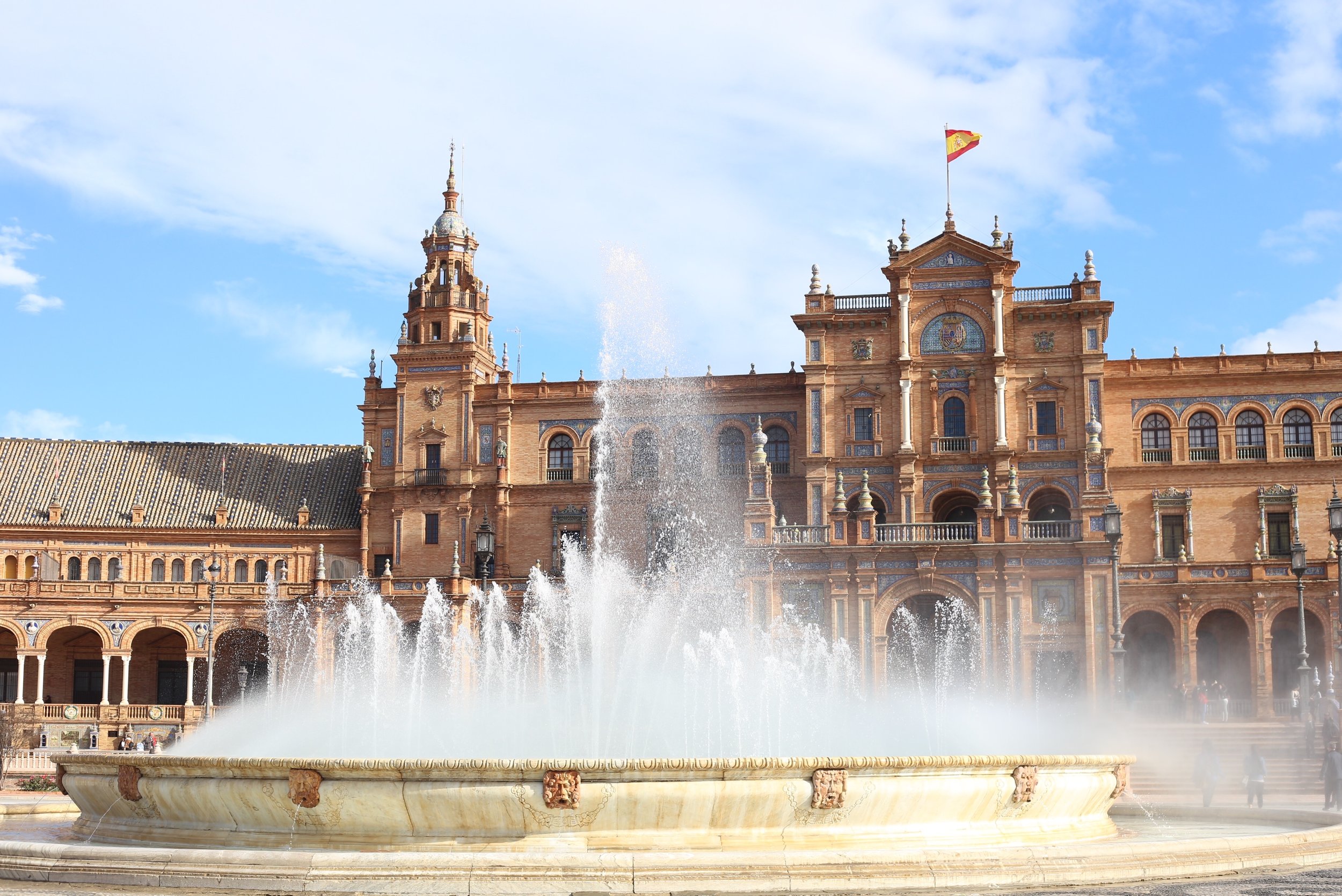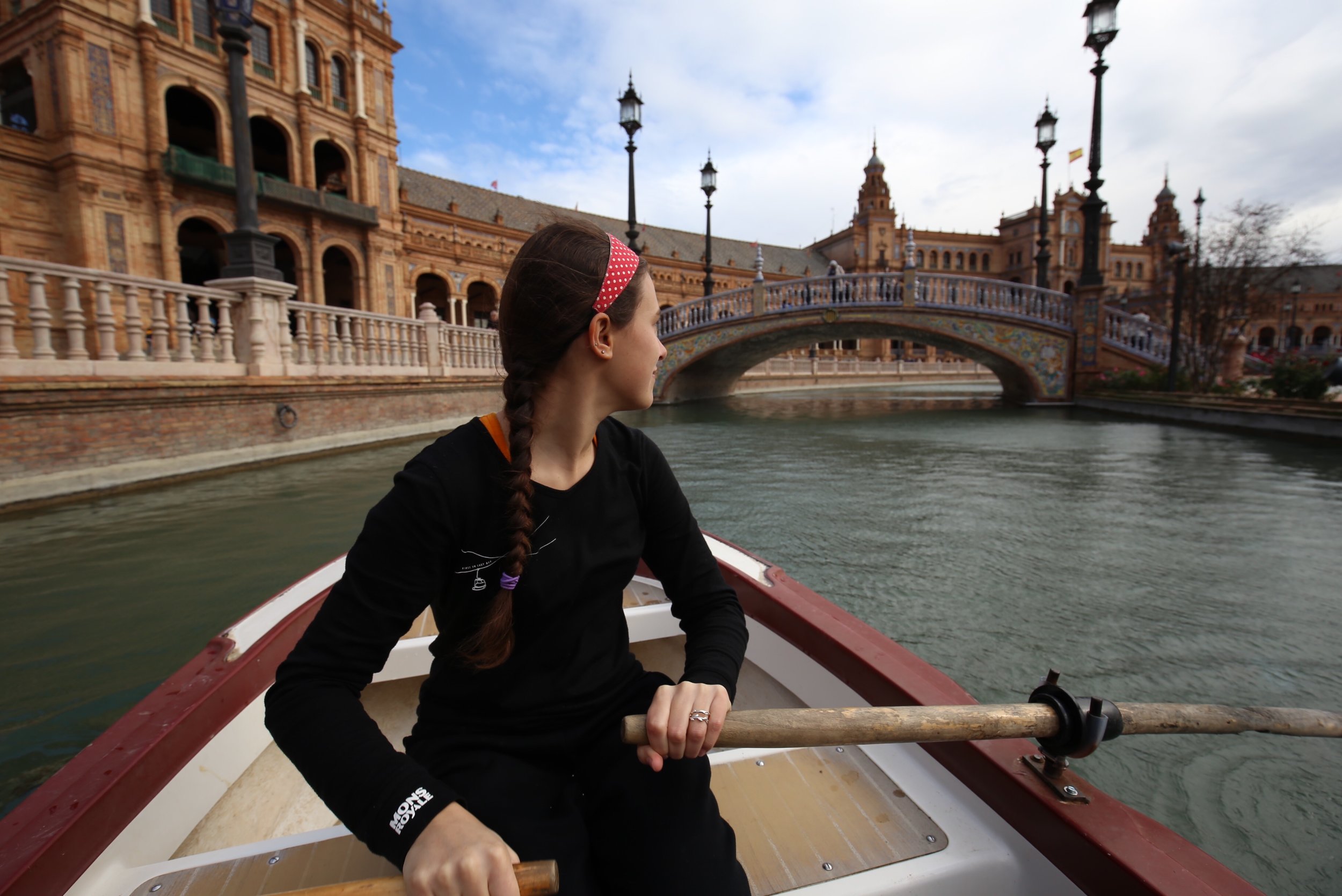Page 12
THE AMERICAN ARCHITECT
May 20, 1928
IBERIAN - AMERICAN EXPOSITION, SEVILLE
This exposition, correctly known as the “Exposicion Iberoamericana,” will be opened October 12, 1928, and will close June 30, 1929. Art, history, industry and commerce, travel, sports, congresses, and festivals will be the principle features of the exposition participated in by Spain and Portugal, the United States and Central and South American Republics.
A part of the exposition will be held in the Parque de María Luisa, famous for its trees and flowers. A large tract of land lying between the city and the Guadalguioir River have been set aside for this project. Those who have visited Seville only need to be reminded of that city’s Oriental character, blue skies, and colorful surroundings.
With an almost ageless background surrounding them, it is stated that the Sevillian workers in ceramics have allowed their art to have full sway. Advanced information indicates that the whole exposition will present a wealth of color and design. Patios, courts, fountains, facades, walls and ceilings will vie with each other to delight the eye…
Following a similar treatment in the use of tiles there will be several fountains in the Maria Luisa Park, notable among them being the Fountain of the Lions in which the pool itself will have a black and gold motif for the walls with an arabesque floor. The Fountain of the Toreadors will show a series of tiles after the manner of Goya, Zuloago and Sorolla. The Fountain of the Frogs will revert to the Mozarabic school. The Fountain of the Star will be Roman. The Kiosk of the Lagoon with its vivid blues will be reminiscent of Mecca.
The Plaza de España is stated to be the most imposing structure in the exposition. It is semi-circular in shape and more than 600 feet across. This is a permanent building and the ceramic work is now being done. The Royal Pavillion or “Pabellon Real” shows probably the finest ceramic murals in the exposition, portraying epochs in the history of the Spanish kings. One of the most striking of these is the Crusades done in the manner of Boutet de Monvil.
The studios and potteries in Triana, across the river from Sevilla, have supplied most of the ceramics, and it is expected that visitors to the exposition will be given the opportunity to see these modern artisans of an ancient art at work.
The art section of the exposition will have four main exhibits. First of these is the Loan Exhibition of the Spanish Royal House, through the courtesy of Alfonso XIII. It will show arms, pottery, tapestries, laces and antiques which have never before been placed on public view.
A special section will be devoted to antique art which will embrace architecture, sculpture and painting. Industrial arts, both ancient and modern, will include ceramics, tapestries, fabrics, upholstery, embroidery, laces, wood works, furniture, glass, wrought iron and leather relief. Modern art will cover decoration, architecture, painting and sculpture.
There will be a special international exhibition of modern painting by guest artists who have been invited to send canvases to the exposition. This will include the work of American and South American as well as Spanish and Portuguese painters.
If the reader is to understand my feelings towards Plaza de España, I must start this story elsewhere: in the adjoining Parque María Luisa...
. . .
We wandered through the park like pigeons pecking at breadcrumbs, zigzagging through dusty avenues and stopping here and there to gaze at a fountain or pagoda. The sun was distant, held back by the canopy of palms and deciduous trees swaying overhead. Underneath it felt cool, shadows blue.
Each garden was like an alcove, a secret space hedged in and secluded from the next. Each was original, studded with tiled fountains and 'glorietas' - those shrine like spaces that invite one to sit and gaze around them with devotion. I was bursting with love for every plant: hibiscus and sugar palms and birds of paradise. Just as I thought it could not be more beautiful, we would emerge into yet another pocket of pure paradise, complete with swans. The author of the park, one Jean-Claude-Nicolas Forestier, intended for it to have such an effect. He took what was once an immense expanse of royal gardens, and converted it into a gridwork of tree lined avenues and enclosed Moorish gardens.
In places the garden seemed a little ramshackle: as if it were a ruffled bed sheet. The garbage, cracked tiles, weeds, piles of dead leaves gave it an air of unkempt beauty bordering on abandonment. Ironically we were observing the gardens in a state not unlike that which would have greeted the visitors of the late 19th century, before the Exposition and the arrival of the Plaza. Then, there were reports of trees being cut for timber, of plants being taken and sold, and pigeons being poached. While there may be no desire left among the public to poach pigeons, the feeling remains that this is a place time left behind.
Coming to the East of the park, the trees opened up, and we stumbled out in front of the Plaza de España.
☙♘☙
That first view was spellbinding. After the intimate spaces of Parque María Luisa, here was something truly immense, dazzling and Grand with a capital ‘g.’ A familiar feeling came over me, one that I normally associate with star gazing: that feeling of being a very small individual, a pebble in the endless pool of space and time. The Plaza stretched out in one massive arc before me.
It was built as a monument for the 1929 Spanish exposition, but unlike the traditional exposition buildings, this is permanent: wrought in stone, marble and tile. Everywhere in the structure is the evidence of a jumbled artistic history: the Spanish Baroque style supplemented by Neo-Mudéjar and Art Deco elements; an appropriate juxtaposition of architectural styles given the layered influences of Roman, Moorish and Catholic rulership on the city at differing time periods. Also evident is the feeling of nostalgia. The Plaza was built at a time when many could still remember a time of colonial power and prestige. In fact, the Plaza was just one of many works created for the Exposition of 1929, many of which would have come from Central and South America to be shown in the different categories of arts and industry. Thus, the Plaza de España acted as a stage for the last great drama of imperial nostalgia.
The spell deepened as I explored the many facets of the Plaza.
. . .
Up the stairs to a balcony,
Through the eyes of a gull
Watching the boaters
And hats far below
Down again strolling
Pink stone carpets
Hands at the railing
Cold smooth ceramic
Sitting in alcoves
Now over the bridges
And into a row boat
Merrily whistling
Pass by pink roses
There’s gold fish in the water
. . .
I lost myself in the details, in the tiling of the walls and ceramic pilasters on the bridge railings. The whole thing was beautiful, not only at a grand scale, but also down to the very last painted flourish. If I had to describe it in one word, I would use
OVERWHELMING
I was drowning in beauty, surrounded by it. This is not a monument to stare at, it is an experience to be involved in.


































